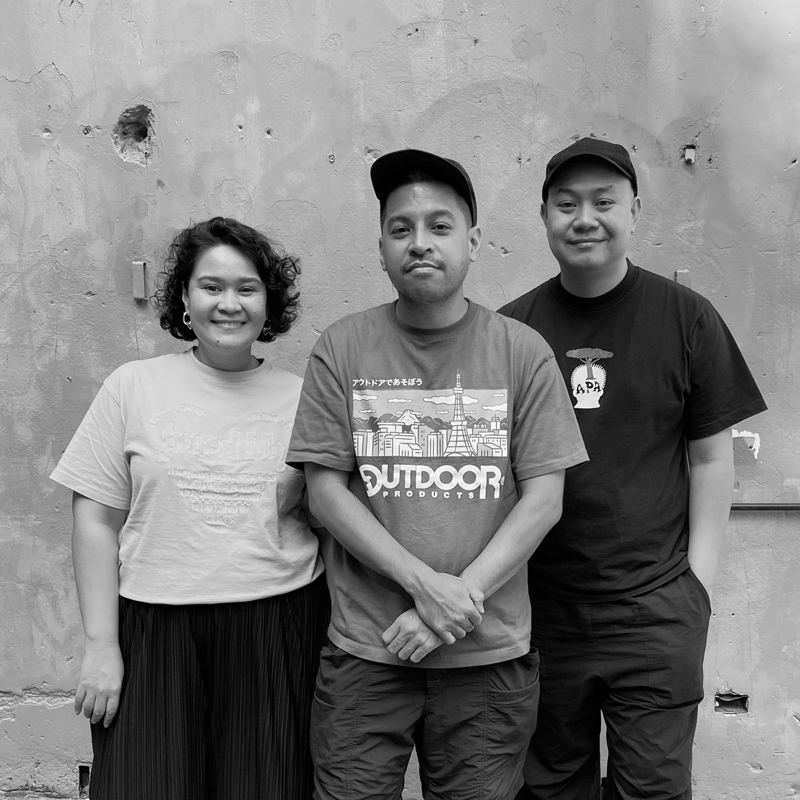
This artist collective, based in Jakarta and Bandung, was founded in 2006 by Febie Babyrose, Herbert Hans, and Ruddy Hatumena. Tromarama creates works by combining video, installation, computer programs and public participation. They put the idea of creating their works based on the influence of digital media on people's views and perceptions of the environment. Through language, text, intelligence and interaction, Tromarama reflects the basic conditions of Indonesian politics and culture as well as forms of perceptual involvement in our hyperreality that applies globally.
Tromarama's works have been presented in various international exhibitions, both in solo and group exhibitions. Some of its solo exhibitions include Deep Pressure, Document, Paris+ par Art Basel, Paris (2023), Contraflow, Kiang Malingue, Hong Kong (2023), Beta, DOCUMENT, Chicago (2021), Madakaripura, Edouard Malingue Gallery, St. Savior Church, London (2020), and LLIMIIINALL, Edouard Malingue Gallery, Shanghai (2019).
Meanwhile, several group exhibitions that it participated in include Digital Diaries, Julia Stoschek Foundation, Dusseldorf (2023), Public Structures, Kunsthal Charlottenborg Biennale, Copenhagen (2022), MENTAL: Colors of Wellbeing, ArtScience Museum, Singapore (2022), and NGV Triennial, National Gallery of Victoria, Melbourne (2020). Tromarama is also actively involved in several art projects, residency programs, workshops and film screenings.
In this activation-based performance work, Tromarama shows the changing definition and the meaning of work today. The digital economic era gave birth to a platform economy that is different from the pre-digital era which relied more on energy, skills and physical presence. This latest economic model has blurred the lines between free time and working hours, hobby and profession, or fun and passion for making money. People can work with various platforms on devices, anywhere and anytime. Gawai (gadget) itself has a double meaning: work and means.
This performance involves several activation actors (activator). Each activator would wear a haptic device such as a smartwatch on his/her wrist. Haptics is software that sends tactile information to the user of the gadget to provide feedback. This smart device has a computer program designed to connect to and retrieve tweets with the hashtag "pleasure". Each tweet is converted into a binary number which transforms into a haptic touch or vibration.
This vibration is felt by each activator who is holding a bekel (small bouncy ball) and a ball which will be thrown repeatedly, towards the wall or the floor. The incident of throwing and catching in the exhibition space continued without meaning, without purpose, and without reason, like a random behavior in free time. The expression "Banting Tulang (Slam the Bones)" originated from the game of Bikkelspel or Bikkelen (Dutch) to "bekel" (Indonesia). In the Netherlands, initially this game used the talus bones of goat or sheep legs. Now we interpret "Banting Tulang" as hard work.
This activation-based performance questions what is the meaning of a person's autonomy who is under the complete authority and control of technological intelligence and how does the platform economy impact him/her? Activation shows the principle of repetition that is driven by motivation alone, not a person's ability. In the virtual world, it is clear that means become actions and vice versa, actions are vehicles.
The duration of each activation will last for sixty minutes.
